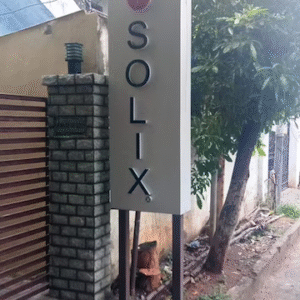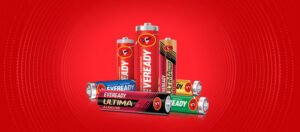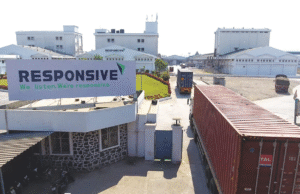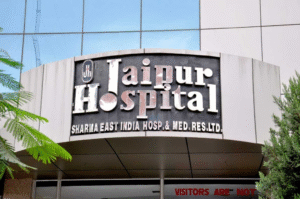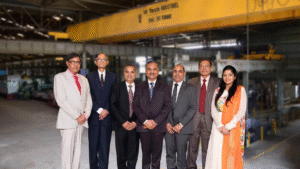1. At a Glance
Founded in 1934, Eveready is that one brand which has been sitting inside Indian households longer than your grandfather’s transistor. Dry cell batteries, flashlights, LED bulbs, appliances, even some random confectionery calledJollies— they’ve sold it all. With 50%+ market share in batteries and 70%+ in flashlights, Eveready is basically the power bank of your parents’ generation. But don’t let nostalgia fool you — between promoter drama, Chinese imports, and Burman family interventions, the company’s journey has been less “Duracell bunny” and more “serial drama on Zee TV.”
2. Introduction
Picture this: you’re in the middle of a power cut (classic India), and while your neighbor is fumbling with a Chinese rechargeable lamp that dies in 10 minutes, you smugly whip out an Eveready flashlight. That’s brand stickiness, baby.
Eveready has been India’s battery king for decades, a literal household name. But markets don’t care about nostalgia. Investors want growth, not just childhood memories of AA batteries rolling out of TV remotes. Over the last decade, the company’s growth story has been flatter than a soda bottle left open overnight. Sales CAGR for 10 years? A glorious 1%. In FMCG terms, that’s basically sleeping on the job.
The Khaitan family almost ran it into the ground with shady inter-corporate deposits (₹489 Cr worth of “friendly loans” to promoter cousins). Enter the Burman family of Dabur, who clearly got bored of just honey and chyawanprash and decided to buy into batteries. Today, the Burmans hold the remote control, while Eveready tries to recharge itself with new products and expansion.
The big question: Can Eveready stillcharge upinvestors, or is it destined to remain that brand your mom remembers fondly but never really grows again?
3. Business Model (WTF Do They Even Do?)
Eveready’s business is simple: they make, market, and sell things that either light up, power up, or (briefly) sweeten up.
- Batteries (64% of revenue)– Their bread, butter, and flashlight. Dominant market leader.
- Flashlights (14%)– Still king, but margins are under pressure thanks to cheap imports.
- Lighting (18%)– LEDs and luminaires, trying to play in a crowded, discount-driven market.
- Appliances (4%)– Small, experimental, and honestly as relevant as “Micromax smartphones.”
- Confectionery/Tea (RIP)– Once tried, now ghosted. Good riddance.
They operate with six factories across India, churning out 2.25 billion batteries and 12.7 million flashlights annually. Distribution? Monster-level. 4 million+ outlets, 0.8 million directly serviced. Basically, if you walk into a kirana shop anddon’tsee an Eveready pack, you’re probably in Pakistan.
But here’s the punchline: While Eveready has scale and reach, growth has been
elusive. It’s like having the biggest cricket stadium in town but playing gully cricket matches inside it.
4. Financials Overview
Latest Quarterly (Q1 FY26) vs YoY and QoQ
| Metric | Latest Qtr (Jun’25) | YoY Qtr (Jun’24) | Prev Qtr (Mar’25) | YoY % | QoQ % |
|---|---|---|---|---|---|
| Revenue | ₹374 Cr | ₹349 Cr | ₹299 Cr | 7.1% | 25.1% |
| EBITDA | ₹54 Cr | ₹50 Cr | ₹26 Cr | 8.0% | 107.7% |
| PAT | ₹30 Cr | ₹29 Cr | ₹10 Cr | 3.4% | 200.0% |
| EPS (₹) | 4.16 | 4.04 | 1.43 | 3.0% | 191.6% |
Annualised EPS = ₹4.16 × 4 = ₹16.6CMP = ₹438 → P/E = 26.4×
Not bad. QoQ rebound looks heroic (200% PAT growth) — but that’s because last quarter was a trainwreck. Classic Eveready: one quarter sprint, one quarter nap.
5. Valuation (Fair Value RANGE only)
- P/E method: EPS (FY25A) = ₹11.5. Apply industry range (25–32×). FV = ₹288–₹368.
- EV/EBITDA: EBITDA FY25 = ₹156 Cr. EV = ₹3,498 Cr → 22.4×. Fair range 16–20× → EV = ₹2,500–₹3,100 Cr → FV = ₹310–₹385.
- DCF: Assuming 5% sales CAGR, 10% PAT CAGR, 12% discount rate, terminal 14×. FV ≈ ₹320–₹390.
🎯Fair Value Range: ₹300–₹385(For educational purposes only, not investment advice.)
6. What’s Cooking – News, Triggers, Drama
- Burman Family Takeover: They now hold 43% and are running the show. Think of it as Dabur’s “energy drink” diversification.
- Capex Buzz: ₹180 Cr alkaline battery plant planned by FY26. Because alkaline > zinc-carbon, both in science and margins.
- Debt Detox: Refinancing high-cost loans → debt down to ₹312 Cr. Good. Less interest, more profit.
- Ratings Upgrade: India Ratings → IND A/Stable (Aug’24). So at least credit agencies aren’t throwing chappals
